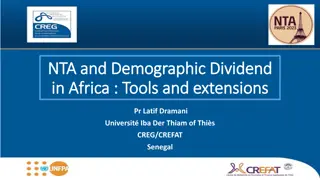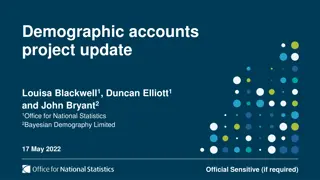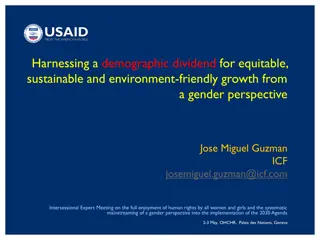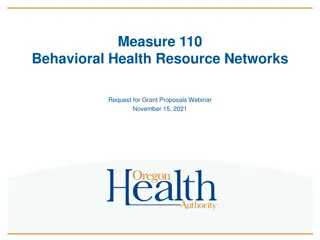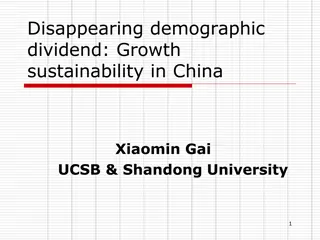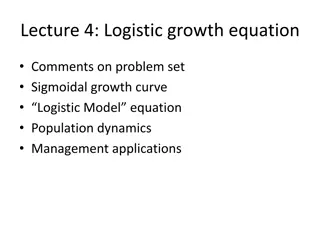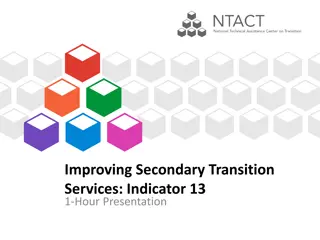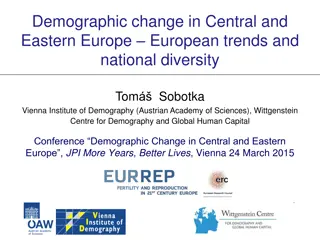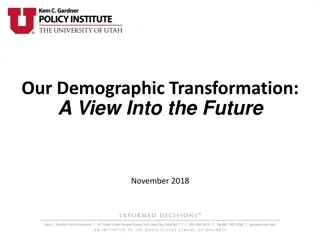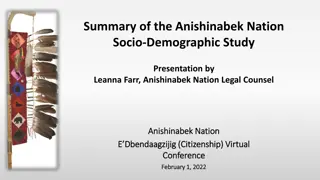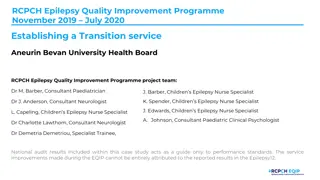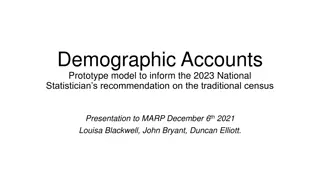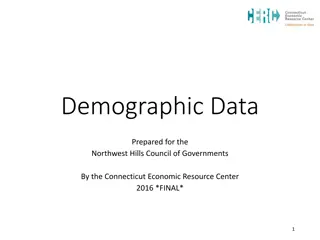Demographic Transition Model: Measure of Growth
The Demographic Transition Model (DTM) is a crucial tool for identifying population trends based on a country's development level. It illustrates the process of change in a society's population, highlighting shifts from high birth and death rates to lower rates and a higher total population. The model's stages – Low Growth, High Growth, Decreasing Growth, and Low Growth – help analyze demographic patterns over time. With key metrics like Crude Birth Rate (CBR), Crude Death Rate (CDR), and Natural Increase Rate (NIR), the DTM offers valuable insights into population dynamics. Explore the stages of this model and understand how societies evolve in terms of population growth.
Download Presentation

Please find below an Image/Link to download the presentation.
The content on the website is provided AS IS for your information and personal use only. It may not be sold, licensed, or shared on other websites without obtaining consent from the author.If you encounter any issues during the download, it is possible that the publisher has removed the file from their server.
You are allowed to download the files provided on this website for personal or commercial use, subject to the condition that they are used lawfully. All files are the property of their respective owners.
The content on the website is provided AS IS for your information and personal use only. It may not be sold, licensed, or shared on other websites without obtaining consent from the author.
E N D
Presentation Transcript
Demographic Transition Model (DTM) A MEASURE OF GROWTH AT DIFFERENT STAGES
Objectives We will be able to use the Demographic Transition Model to identify the nature of population increase or decrease based on the development level of a particular country.
Demographic Transition Process of change in a society s population From high CBR and CDR and low rate of Natural Increase (NIR) to a condition of low CBR and CDR, low NIR, and higher total population
Necessary Data Crude Birth Rate (CBR)- total number of live births in a year for every 1,000 people alive Crude Death Rate (CDR)- total number of deaths in a year for every 1,000 people alive Natural Increase Rate (NIR)- percentage a population grows in a year. CBR-CDR=NIR Calculate the NIR if the CBR is 20 and the CDR is 5
Stages of the Demographic Transition Model 4 stages to the DTM (a 5this debated) Stage 1- Low Growth Stage 2- High Growth Stage 3- Decreasing Growth Stage 4- Low Growth
Stage 1- Low Growth Very High CBR and CDR- virtually no NIR Most of human history spent in stage 1 Depends on the availability of food What stage of human history/development do you believe best characterizes stage 1?
Stage 2- High Growth Rapidly declining CDR, very high CBR= very high NIR Europe and North America entered stage 2 after ~1750. WHY? Industrial Revolution Africa, Asia, and Latin America entered around 1950. WHY? Medical Revolution
Stage 3- Decreasing Growth CBR rapidly declines, CDR declines, NIR moderates Population continues to grow because CBR is greater than CDR People decide to have less children at this stage. Why?
Stage 4- Low Growth Very low CBR, CDR, NIR creates low growth or a possible decrease Zero population growth (ZPG) can be achieved at this level More opportunities for woman Education Enter labor force Access to Birth Control Which countries that we have discussed may fall in this stage? How does the DTM create a cycle? What are the similarities between stage 1 and 4?
Connecting our concepts What might the population pyramids for a country at different stages look like (1, 2, 3, and 4 Jigsaw)? Roughly sketch them in your notes
DTM Practice Create a Demographic Transition Model based off of the data from England.
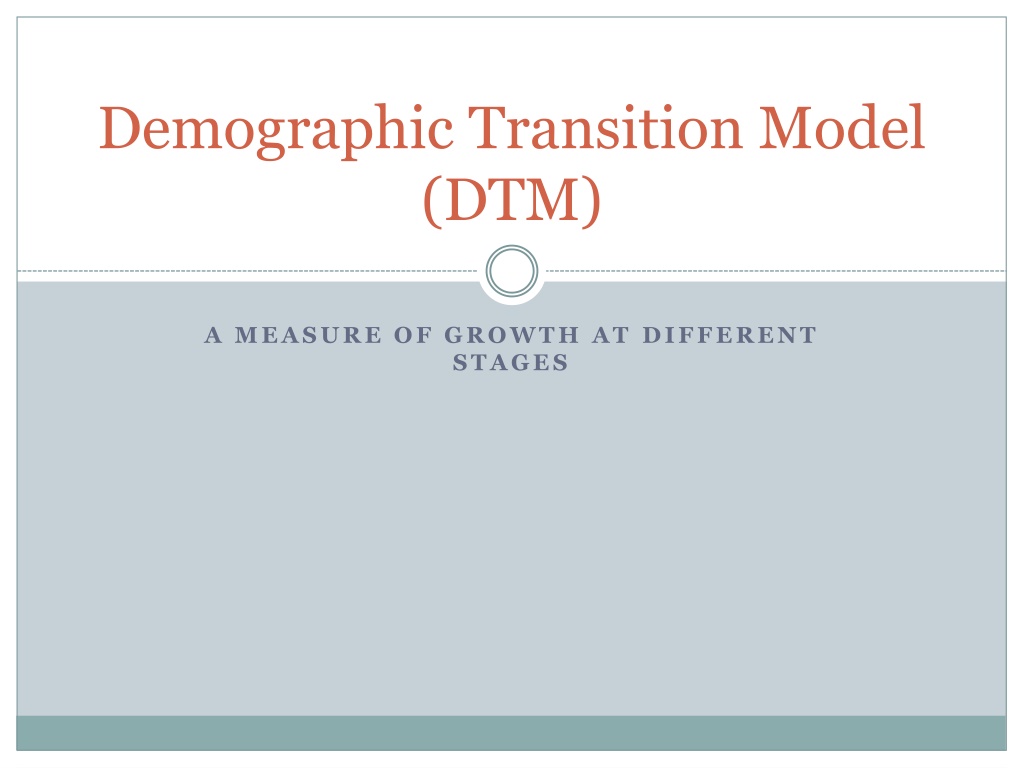
 undefined
undefined












